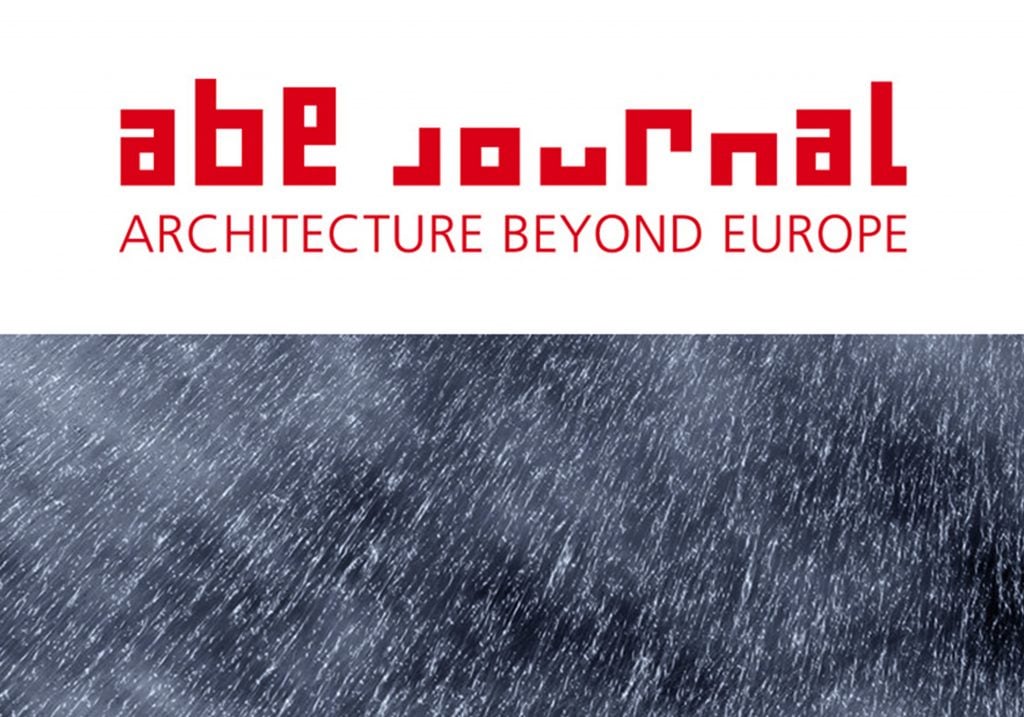
ABE Journal CfP: Entanglements of Architecture and Comfort
Entanglements of Architecture and Comfort beyond the Temperate Zone
Section guest-edited by:
Jiat-Hwee Chang, National University of Singapore (Singapore) and
Daniel Ryan, University of Sydney (Australia).
The dominant discourse on comfort in architecture today is one that is seen as both universal—with slight variations across different geographies, climates, cultures, and societies—and ahistorical—timeless in that comfort is premised on supposedly immutable human biological responses to the environment. The universalist claims—in both space and time, across geographies and histories—of the discourse on comfort are typical of any technoscientific constructions in which technological and scientific developments are deeply intertwined and mutually constitutive. However, as Bruno Latour and Donna Haraway, among other Science Technology Studies scholars, have pointed out, technoscientific knowledge is situated knowledge. In the case of comfort, the recent discourse was primarily produced by researchers based in or originating from Europe and North America, and was wittingly or unwittingly shaped by their temperate norms and assumptions. Taught in architectural curricula and codified into building standards, the Euro-American-centric discourse on comfort was widely disseminated in the building industry and translated into urban and architectural culture with implications on interior furnishing, space planning, building services, facades and envelopes, urban design and planning, and even settlement patterns globally. Today, dominant narratives on comfort underpin the ubiquitous adoption of energy-profligate air-conditioning as a typical means of comfort provision, which is in turn widely regarded as one of the main factors contributing to the current planetary climate crisis.
It is time that we construct counter- and alternative-histories to interrogate this dominant and hugely-influential discourse on comfort. For this guest-edited section of ABE Journal, we would like to go beyond the Euro-American temperate zone to understand how comfort has been historically constructed in other geo-climatic zones and socio-cultural contexts around the world. To be sure, the boundaries and limits of this Euro-American temperate zone are themselves sociotechnical constructions contingent upon specific historical circumstances. While we welcome contributions that problematize this geographical delimitation, we would like to use it as a prerequisite in this guest-edited section of ABE journal as a means to seek and uncover other histories of comfort that existed before and/or in parallel to the dominant discourse that emerged in the mid-twentieth century. Indeed, comfort has a much longer material cultural history, as John E. Crowley, among others, has compellingly argued. We are interested in other socio-cultural or technoscientific constructions of comfort from the mid-twentieth century on, and before, that have been marginalised by the dominant discourse. How do these other histories of comfort challenge the Euro-American dominant discourse, its underlying assumptions, its means of comfort provision, and its built environmental implications?
By going beyond the temperate zone to uncover other histories, we are also inevitably engaging with the processes of colonialism and postcolonial (inter)nationalism that shaped the modern world in the past few hundred years. How did Europeans (and later Americans) produce comfort both discursively and through practices in response to the unfamiliar geographies, ecologies, climates, cultures and societies that they encountered beyond the temperate world? To what extent did these responses incorporate non-European indigenous knowledge? Conversely, how did indigenous societies respond to Euro-American norms of comfort? What were the different responses, how have these responses changed through time and under what historical circumstances, and how did they affect architectural production? Or, for that matter: were there encounters and interactions between different non-Euro-American societies—what we call South-South exchanges today – that might have shaped understandings of comfort and configurations of the built environment historically, whether in conjunction with or oblivious to the processes of colonialism and postcolonialism?
We are keen to understand the social, cultural, and political entanglements of comfort so as to have a better grasp of the situatedness of technoscientific knowledge on comfort and the intrinsic complexity of the concept. Various scholars from different disciplines have shown us that comfort was—and still is—deeply entangled with a whole array of ideas linked (but not limited) to racial identities, climatic determinism, (post)colonial biopolitics, human productivity, and socio-economic development. Were the entanglements of comfort beyond the temperate world similar? What were the architectural repercussions of these entanglements of comfort historically, particularly beyond the temperate world? In what ways were the spatiality and materiality of architecture implicated in such entanglements of comfort in the past?
We welcome submissions that engage with these and other questions on architecture and comfort beyond the temperate world. In this guest-edited section of ABE Journal, we will be using architecture as a shorthand for the material culture of enclosure and surrounding across different scales—from clothing to furniture, from interior design to individual buildings, and from clusters of buildings to whole cities.
Submission deadline:
31 October 2019.
Please send your submissions to abe[at]inha.fr.